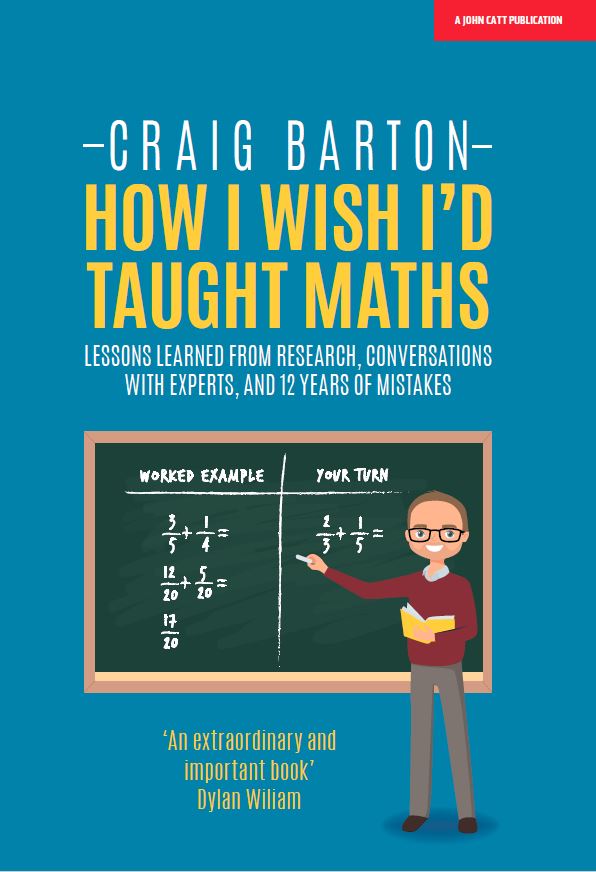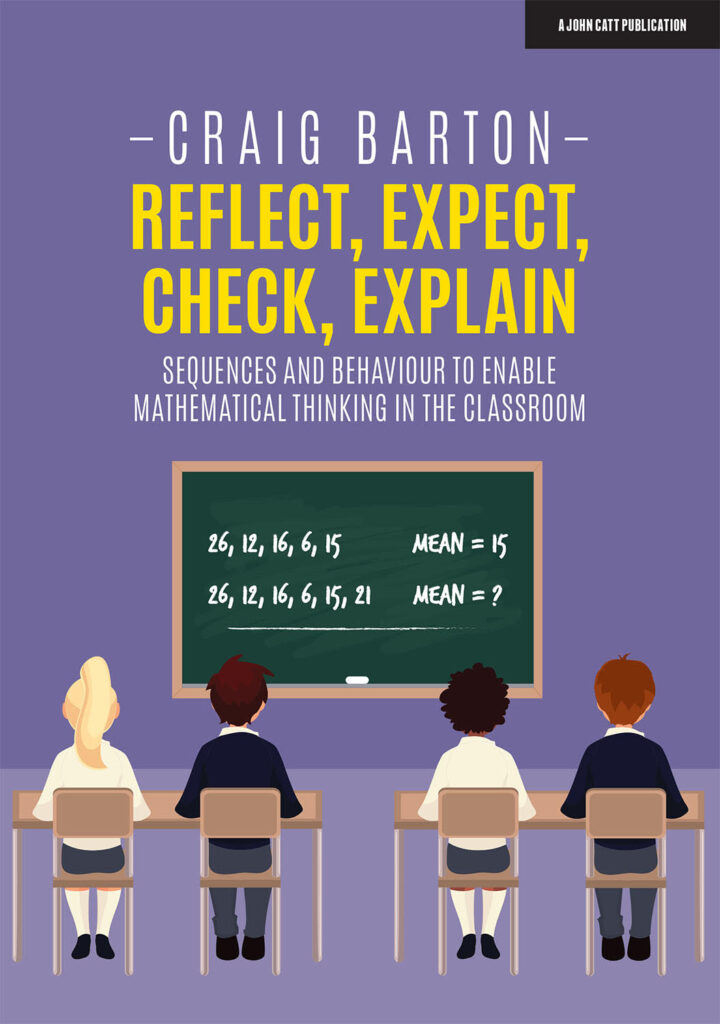GCSE Maths 2018 Edexcel Foundation Paper 3
🧮 Calculator Paper
Calculator button sequences are shown for tricky calculations.
Mark Scheme Legend
- M1 = Method mark (correct method applied)
- A1 = Accuracy mark (correct answer)
- B1 = Independent mark (correct statement or value)
- P1 = Process mark (completing a process)
- C1 = Communication mark (clear explanation or reasoning)
Table of Contents
- Question 1 (Fractions)
- Question 2 (Percentages)
- Question 3 (Rounding)
- Question 4 (Sequences)
- Question 5 (Place Value)
- Question 6 (Factors)
- Question 7 (Ratios)
- Question 8 (Calculations)
- Question 9 (Time)
- Question 10 (Money)
- Question 11 (Fractions)
- Question 12 (Scale Drawing)
- Question 13 (Linear Graphs)
- Question 14 (Data Handling)
- Question 15 (Error Analysis)
- Question 16 (Fractions/Ratio)
- Question 17 (Area)
- Question 18 (Standard Form)
- Question 19 (Scatter Graphs)
- Question 20 (Algebra)
- Question 21 (Area)
- Question 22 (Probability Trees)
- Question 23 (Trigonometry)
- Question 24 (Probability)
- Question 25 (Equations)
- Question 26 (Polygon Angles)
- Question 27 (Similar Triangles)
- Question 28 (Rearranging Formulae)
Question 1 (1 mark)
Write \(\frac{9}{10}\) as a decimal.
Step 1: Understanding Place Value
💡 Why we do this: Decimals are based on powers of 10. The first digit after the decimal point is the “tenths” column.
The fraction is “nine tenths”.
In decimal form, this is written as 0.9
Final Answer: 0.9
✓ (B1)
Question 2 (1 mark)
Write 0.3 as a percentage.
Step 1: Converting Decimal to Percentage
💡 Why we do this: “Percent” means “per 100”. To turn a decimal into a percentage, we multiply by 100.
Final Answer: 30%
✓ (B1)
Question 3 (1 mark)
Write the number 2538 correct to the nearest hundred.
Step 1: Identify the column
💡 Why we do this: We are rounding to the nearest hundred, so we look at the hundreds digit (5) and the digit to its right (3).
Number: 2538
The next digit is 3.
Since 3 is less than 5, we round down (keep the 5 as it is).
Final Answer: 2500
✓ (B1)
Question 4 (3 marks)
Here are the first 4 terms of a sequence.
2 9 16 23
(a) (i) Write down the next term in the sequence.
(ii) Explain how you got your answer.
(b) Work out the 10th term of the sequence.
Part (a)(i): Finding the next term
💡 What’s the pattern? Let’s find the difference between terms.
\(9 – 2 = 7\)
\(16 – 9 = 7\)
\(23 – 16 = 7\)
The sequence increases by 7 each time.
Next term: \(23 + 7 = 30\)
✓ (B1)
Part (a)(ii): Explanation
Possible answers:
- “Add 7 each time”
- “The term-to-term rule is +7”
- “It increases by 7”
✓ (C1)
Part (b): 10th Term
💡 Strategy: We can either keep adding 7 until we reach the 10th term, or use the nth term formula.
Method 1: Counting on
Terms: 2, 9, 16, 23, 30, 37, 44, 51, 58, 65
Method 2: Nth Term Rule
The sequence goes up by 7, so it’s related to the 7 times table (\(7n\)).
\(7 \times 1 = 7\). To get to our first term (2), we subtract 5.
Rule: \(7n – 5\)
For 10th term (\(n=10\)): \(7(10) – 5 = 70 – 5 = 65\)
Final Answer: 65
✓ (B1)
Question 5 (2 marks)
Here are four digits.
7 3 4 9
(a) Use three of these digits to write down the largest possible 3-digit number.
(b) Here are four different digits.
8 2 1 6
Put one of these digits in each box to give the smallest possible answer to the sum. You must use each digit only once.
Part (a): Largest 3-digit number
💡 Strategy: To make the largest number, put the largest digit in the hundreds column, the next largest in the tens, and so on.
Digits: 7, 3, 4, 9
Largest to smallest: 9, 7, 4, 3
Top 3 digits: 9, 7, 4
Result: 974
✓ (B1)
Part (b): Smallest Sum
💡 Strategy: To get the smallest sum, the tens digits (the most valuable positions) must be the smallest available numbers.
Digits: 1, 2, 6, 8
Smallest digits for tens columns: 1 and 2.
Remaining digits for units columns: 6 and 8.
Possible combinations:
- \(16 + 28 = 44\)
- \(18 + 26 = 44\)
The numbers are 16 and 28 (or 18 and 26).
Final Answer: 16 and 28 (or 18 and 26)
✓ (B1)
Question 6 (2 marks)
Write down all the factors of 30.
Step 1: Finding Factor Pairs
💡 What is a factor? A whole number that divides into 30 exactly. It’s best to find them in pairs starting from 1.
\(1 \times 30 = 30\)
\(2 \times 15 = 30\)
\(3 \times 10 = 30\)
\(5 \times 6 = 30\)
Final Answer: 1, 2, 3, 5, 6, 10, 15, 30
✓ (B2) (B1 for at least 3 correct)
Question 7 (2 marks)
David has twice as many cousins as Becky.
Becky has twice as many cousins as Nishat.
Nishat has 6 cousins.
How many cousins does David have?
Step 1: Work Backwards
💡 Strategy: Start with the person whose number we know (Nishat) and work up the chain.
Nishat: 6 cousins
Becky: Twice as many as Nishat
\(6 \times 2 = 12\) cousins
David: Twice as many as Becky
\(12 \times 2 = 24\) cousins
✓ (M1) for complete method (6 × 2 × 2)
Final Answer: 24
✓ (A1)
Question 8 (3 marks)
(a) Find the value of \(\sqrt{1.44 \times 3.61}\)
(b) Find the value of \((3.54 – 0.96)^2 – 4.096\)
Part (a)
💡 Calculator Skill: Type this exactly as shown. Use the square root button \(\sqrt{\square}\), then type \(1.44 \times 3.61\) inside it.
\(\sqrt{5.1984} = 2.28\)
✓ (B1)
Part (b)
💡 Calculator Skill: Be careful with brackets. Calculate the bracket first or type the full expression.
Inside bracket: \(3.54 – 0.96 = 2.58\)
Square it: \(2.58^2 = 6.6564\)
Subtract 4.096: \(6.6564 – 4.096 = 2.5604\)
Final Answer: 2.5604
✓ (B2)
Question 9 (4 marks)
This is part of a bus timetable between Bury and Manchester.
| Bury | 08 25 | 08 55 | 09 15 | 09 30 | 09 45 | 10 05 |
|---|---|---|---|---|---|---|
| Whitefield | 08 34 | 09 04 | 09 24 | 09 39 | 09 54 | 10 14 |
| Heaton Park | 08 46 | 09 16 | 09 36 | 09 51 | 10 06 | 10 27 |
| Cheetham | 08 56 | 09 26 | 09 46 | 10 01 | 10 16 | 10 37 |
| Manchester | 09 05 | 09 35 | 09 55 | 10 10 | 10 25 | 10 48 |
(a) How many minutes should the 08 25 bus take to go from Bury to Manchester?
(b) Daniel goes from Whitefield to Manchester by bus.
Daniel takes 17 minutes to get from his house to the bus stop in Whitefield.
He takes 15 minutes to get from the bus stop in Manchester to work.
Daniel has to get to work by 10 am.
He leaves his house at 8.45 am.
Does Daniel get to work by 10 am? You must show all your working.
Part (a)
Departs Bury: 08:25
Arrives Manchester: 09:05
Difference: 25 mins to 9:00, plus 5 mins = 40 minutes.
✓ (B1)
Part (b): Planning the Journey
💡 Strategy: Let’s follow Daniel’s journey step-by-step.
1. Walk to Bus Stop:
Leaves house: 08:45
Walks: 17 mins
Arrives at bus stop: \(08:45 + 17 \text{ mins} = 09:02\)
2. Catch the Bus:
He is at Whitefield at 09:02.
Look at timetable for next bus from Whitefield: 09:04
This bus arrives in Manchester at: 09:35
3. Walk to Work:
Arrives Manchester: 09:35
Walks: 15 mins
Arrives at work: \(09:35 + 15 \text{ mins} = 09:50\)
✓ (P1) process to add times
✓ (P1) process to find bus time
Conclusion: He arrives at 09:50. Work starts at 10:00.
Yes, he gets to work by 10 am.
✓ (C1)
Question 10 (3 marks)
Bronwin works in a restaurant. The table gives her rates of pay.
| Day | Rate of pay |
|---|---|
| Monday to Friday | £8.40 per hour |
| Weekend | £11.20 per hour |
Bronwin worked for a total of 20 hours last week.
She worked 8 of these 20 hours at the weekend.
Show that Bronwin was paid less than £200 last week.
Step 1: Calculate Hours
Total hours: 20
Weekend hours: 8
Monday-Friday hours: \(20 – 8 = 12\) hours
✓ (M1)
Step 2: Calculate Pay
Weekend Pay: \(8 \times £11.20 = £89.60\)
Weekday Pay: \(12 \times £8.40 = £100.80\)
Total Pay: \(£89.60 + £100.80 = £190.40\)
✓ (M1)
£190.40 is less than £200.
✓ (C1)
Question 11 (2 marks)
Last year the cost of a season ticket for a football club was £560.
This year the cost of a season ticket for the club has been increased to £600.
Write down the increase in the cost of a season ticket as a fraction of last year’s cost.
Step 1: Find the Increase
Increase = New Price – Old Price
\(£600 – £560 = £40\)
✓ (M1)
Step 2: Write as a Fraction
💡 Why we do this: The question asks for the increase as a fraction of last year’s cost.
Fraction = \(\frac{\text{Increase}}{\text{Original Cost}} = \frac{40}{560}\)
Simplify:
\(\frac{40}{560} = \frac{4}{56} = \frac{1}{14}\)
Final Answer: \(\frac{40}{560}\) or \(\frac{1}{14}\)
✓ (A1)
Question 12 (5 marks)
The diagram shows a scale drawing of a tennis court.
The scale of the drawing is 1 : 200
Work out the perimeter of the real tennis court. Give your answer in metres.
Step 1: Measure the diagram
Note: On a printed paper, you would use a ruler. Based on standard exam measurements:
Length = 11.5 cm (approx)
Width = 5.8 cm (approx)
✓ (B1)
Step 2: Convert to Real Size (cm)
Scale is 1 : 200.
Real Length = \(11.5 \text{ cm} \times 200 = 2300 \text{ cm}\)
Real Width = \(5.8 \text{ cm} \times 200 = 1160 \text{ cm}\)
✓ (P1)
Step 3: Convert to Metres
\(2300 \text{ cm} = 23 \text{ m}\)
\(1160 \text{ cm} = 11.6 \text{ m}\)
✓ (P1)
Step 4: Calculate Perimeter
Perimeter = \(2 \times (\text{Length} + \text{Width})\)
\(2 \times (23 + 11.6) = 2 \times 34.6 = 69.2 \text{ m}\)
Final Answer: 69.2 m (Range 67.6 – 70.8 accepted depending on measurement)
✓ (A1)
Question 13 (2 marks)
Here are six straight line graphs.
Match each equation in the table to the correct graph.
| Equation | Graph |
|---|---|
| \(y = 2\) | |
| \(y = x\) | |
| \(x + y = 2\) |
Analyzing the Equations
\(y = 2\): This means y is ALWAYS 2. This is a horizontal line crossing the y-axis at 2.
Graph D is a horizontal line above the x-axis.
Match: Graph D
\(y = x\): This line goes through the origin (0,0) and has a gradient of 1 (goes up as it goes right).
Graph F goes through the origin and slopes up.
Match: Graph F
\(x + y = 2\): If we rearrange this, \(y = -x + 2\). It crosses y at 2 and has a negative gradient (goes down).
Graph A crosses y at 2 and slopes down. Also, if \(y=0, x=2\), so it crosses x at 2.
Match: Graph A
y = 2 : D
y = x : F
x + y = 2 : A
✓ (C2)
Question 14 (5 marks)
Here are the marks 20 students got in a French test.
76, 82, 84, 69, 80, 64, 70, 81, 75, 91
87, 67, 80, 70, 94, 76, 81, 69, 71, 77
(a) Show this information in a stem and leaf diagram.
One of these students is going to be chosen at random.
The pass mark in the French test is 71.
Omar writes, “The probability that this student failed the French test is \(\frac{1}{4}\).”
Omar is wrong.
(b) Explain why.
Part (a): Stem and Leaf Diagram
💡 How to do it: Sort the numbers first, then split them into ‘stem’ (tens) and ‘leaf’ (units).
Ordered data: 64, 67, 69, 69, 70, 70, 71, 75, 76, 76, 77, 80, 80, 81, 81, 82, 84, 87, 91, 94
Stem | Leaf
6 | 4 7 9 9
7 | 0 0 1 5 6 6 7
8 | 0 0 1 1 2 4 7
9 | 1 4
Key: 6 | 4 = 64
✓ (B2)
Part (b): Probability
Pass mark is 71.
Students who failed (scored less than 71): 64, 67, 69, 69, 70, 70.
Total failed = 6 students.
Total students = 20.
Probability = \(\frac{6}{20} = \frac{3}{10}\)
Omar said \(\frac{1}{4}\) (which is \(\frac{5}{20}\)).
Explanation: 6 students failed, so probability is \(\frac{6}{20}\), not \(\frac{5}{20}\).
✓ (C1)
Question 15 (2 marks)
Jenny is asked to find the value of \(12 – 2 \times 4\)
Here is her working: \(12 – 2 \times 4 = 10 \times 4 = 40\)
Jenny’s answer is wrong.
(a) Explain what Jenny has done wrong.
Rehan is asked to find the range of the numbers 3 1 8 7 5
Here is his working: Range = \(5 – 3 = 2\)
This is wrong.
(b) Explain why.
Part (a)
💡 BIDMAS/BODMAS: Multiplication must be done before Subtraction.
Jenny subtracted first. She should have multiplied first (\(2 \times 4 = 8\), then \(12 – 8 = 4\)).
✓ (C1)
Part (b)
💡 Range: Largest number minus Smallest number.
Rehan did not use the largest and smallest numbers. The range is \(8 – 1 = 7\).
✓ (C1)
Question 16 (5 marks)
Alan, Bispah and Chan share a sum of money.
Alan gets \(\frac{1}{8}\) of the money.
Bispah gets \(\frac{1}{2}\) of the money.
Chan gets the rest of the money.
Alan gets £2.50.
(a) Work out how much money Bispah gets.
(b) Find the ratio of money Alan gets : money Chan gets.
Part (a): Bispah’s Money
💡 Logic: We know Alan’s fraction (\(\frac{1}{8}\)) represents £2.50. We need to find Bispah’s amount (\(\frac{1}{2}\)).
\(\frac{1}{8}\) of total = £2.50
Total money = \(£2.50 \times 8 = £20.00\)
Bispah gets \(\frac{1}{2}\) of £20.00.
\(£20.00 \div 2 = £10.00\)
✓ (M1) for method, ✓ (A1) for 10
Part (b): Ratio
Chan’s Share:
Alan (£2.50) + Bispah (£10.00) = £12.50
Total = £20.00
Chan = \(£20.00 – £12.50 = £7.50\)
Ratio Alan : Chan
\(2.50 : 7.50\)
Multiply by 10 to clear decimals: \(25 : 75\)
Divide by 25: \(1 : 3\)
Final Answer: 1 : 3
✓ (A1)
Question 17 (3 marks)
ABC is an isosceles right-angled triangle.
The area of the triangle is 162 cm².
Work out the value of \(x\).
Step 1: Formula for Area
💡 Formula: Area = \(\frac{\text{base} \times \text{height}}{2}\)
Base = \(3x\), Height = \(3x\)
Area = \(\frac{3x \times 3x}{2} = \frac{9x^2}{2}\)
Step 2: Solve Equation
\(\frac{9x^2}{2} = 162\)
Multiply by 2: \(9x^2 = 324\)
Divide by 9: \(x^2 = 36\)
Square root: \(x = \sqrt{36} = 6\)
Final Answer: \(x = 6\)
✓ (A1)
Question 18 (2 marks)
Work out the value of \(\frac{2.645 \times 10^9}{1.15 \times 10^3}\)
Give your answer in standard form.
Step 1: Calculate
Divide the numbers: \(2.645 \div 1.15 = 2.3\)
Divide the powers of 10: \(10^9 \div 10^3 = 10^{9-3} = 10^6\)
Final Answer: \(2.3 \times 10^6\)
✓ (A1)
Question 19 (3 marks)
The scatter diagram shows information about 12 girls.
It shows the age of each girl and the best time she takes to run 100 metres.
(a) Write down the type of correlation.
Kristina is 11 years old. Her best time to run 100 metres is 12 seconds.
The point representing this information would be an outlier on the scatter diagram.
(b) Explain why.
Debbie is 15 years old. Debbie says, “The scatter diagram shows I should take less than 12 seconds to run 100 metres.”
(c) Comment on what Debbie says.
Part (a): Correlation
The points go downwards from left to right. As age increases, time decreases.
Negative correlation.
✓ (B1)
Part (b): Outlier
An outlier is a point that doesn’t fit the trend.
A point at (11, 12) would be very low down compared to the other points for age 11 (which are around 15-16 seconds).
It is far away from the line of best fit.
✓ (C1)
Part (c): Extrapolation
Debbie is 15. The data only goes up to age 14.
We cannot be sure the trend continues. Estimating outside the data range (extrapolation) is unreliable.
✓ (C1)
Question 20 (2 marks)
Expand and simplify \(5(p + 3) – 2(1 – 2p)\)
Step 1: Expand the Brackets
⚠ Common Mistake: Be careful with the negative sign in front of the second bracket: \(-2 \times -2p = +4p\).
\(5(p + 3) = 5p + 15\)
\(-2(1 – 2p) = -2 + 4p\)
✓ (M1)
Step 2: Collect Like Terms
\(5p + 15 – 2 + 4p\)
\((5p + 4p) + (15 – 2)\)
\(9p + 13\)
Final Answer: \(9p + 13\)
✓ (A1)
Question 21 (2 marks)
Here is a trapezium drawn on a centimetre grid.
On the grid, draw a triangle equal in area to this trapezium.
Step 1: Calculate Area of Trapezium
💡 Formula: Area = \(\frac{a+b}{2} \times h\) or count squares.
Top length (a) = 2 cm
Bottom length (b) = 7 cm (Assume 2 cm from grid visually)
Height (h) = 4 cm
Area = \(\frac{2+7}{2} \times 4 = 4.5 \times 4 = 18 \text{ cm}^2\)
✓ (M1)
Step 2: Calculate Triangle Dimensions
Area of Triangle = \(\frac{\text{base} \times \text{height}}{2} = 18\)
\(\text{base} \times \text{height} = 36\)
Possible triangles:
- Base = 6, Height = 6
- Base = 9, Height = 4
- Base = 4, Height = 9
Draw any of these triangles on the grid.
✓ (A1)
Question 22 (2 marks)
When a biased 6-sided dice is thrown once, the probability that it will land on 4 is 0.65
The biased dice is thrown twice.
Amir draws this probability tree diagram. The diagram is not correct.
Write down two things that are wrong with the probability tree diagram.
Step 1: Analyzing Probabilities
💡 Rule: Probabilities on branches originating from the same point must add up to 1.
First throw: \(0.65 + 0.25 = 0.90\). This is not 1.
Error 1: The probability of ‘not land on 4’ should be \(1 – 0.65 = 0.35\), not 0.25.
💡 Rule: The probability of landing on 4 is always 0.65.
Second throw (top): The probabilities are swapped (0.35 for landing on 4).
Error 2: For the second throw, the probability of ‘land on 4’ should still be 0.65.
✓ (C2)
Question 23 (3 marks)
ABC is a right-angled triangle.
(a) Work out the size of angle ABC. Give your answer correct to 1 decimal place.
The length of the side AB is reduced by 1 cm. The length of the side BC is still 7 cm. Angle ACB is still 90°.
(b) Will the value of cos ABC increase or decrease? You must give a reason for your answer.
Part (a): SOH CAH TOA
💡 Identify Sides:
- Hypotenuse (AB): 11 cm
- Adjacent (BC): 7 cm
- Opposite (AC): Unknown
We have Adj and Hyp, so we use CAH: \(\cos(x) = \frac{A}{H}\)
\(\cos(ABC) = \frac{7}{11}\)
\(ABC = \cos^{-1}(\frac{7}{11})\)
\(ABC = 50.478…\)
Final Answer: 50.5°
✓ (M1) method, ✓ (A1) answer
Part (b): Effect of change
\(\cos(ABC) = \frac{\text{Adjacent}}{\text{Hypotenuse}} = \frac{7}{11}\)
If Hypotenuse decreases to 10: \(\cos(ABC) = \frac{7}{10}\)
\(\frac{7}{10} = 0.7\), while \(\frac{7}{11} \approx 0.63\).
Since the denominator decreases, the value of the fraction increases.
✓ (C1)
Question 24 (5 marks)
There are some counters in a bag. The counters are red or white or blue or yellow.
| Colour | Red | White | Blue | Yellow |
|---|---|---|---|---|
| Probability | 0.45 | 0.25 |
There are 18 blue counters in the bag.
The probability that the counter Bob takes will be red is twice the probability that the counter will be white.
(a) Work out the number of red counters in the bag.
(b) A marble is going to be taken at random from a box of marbles. The probability that the marble will be silver is 0.5. There must be an even number of marbles in the box. Explain why.
Part (a): Find Total Counters
Probability of Blue is 0.45.
Number of Blue is 18.
Total counters = \(18 \div 0.45 = 40\).
✓ (P1)
Step 2: Find Red Probability
Sum of P(Blue) + P(Yellow) = \(0.45 + 0.25 = 0.70\)
Remaining Probability for Red + White = \(1 – 0.70 = 0.30\)
Let P(White) = \(x\), then P(Red) = \(2x\).
\(x + 2x = 0.30 \Rightarrow 3x = 0.30 \Rightarrow x = 0.10\)
P(Red) = \(2 \times 0.10 = 0.20\)
✓ (P1)
Step 3: Calculate Number of Red
Number of Red = P(Red) × Total
\(0.20 \times 40 = 8\)
Final Answer: 8
✓ (A1)
Part (b): Explanation
Probability 0.5 means half the marbles are silver.
You cannot have half a marble, so for half of the total to be a whole number, the total must be even.
✓ (C1)
Question 25 (3 marks)
Solve \(\frac{5 – x}{2} = 2x – 7\)
Step 1: Remove Fraction
💡 Strategy: Multiply both sides by 2.
\(5 – x = 2(2x – 7)\)
\(5 – x = 4x – 14\)
✓ (M1)
Step 2: Collect Terms
Add \(x\) to both sides: \(5 = 5x – 14\)
Add 14 to both sides: \(19 = 5x\)
✓ (M1)
Step 3: Solve
\(x = \frac{19}{5}\)
\(x = 3.8\)
Final Answer: 3.8
✓ (A1)
Question 26 (5 marks)
ABCDE is a pentagon.
Angle BCD = \(2 \times\) angle ABC.
Work out the size of angle BCD.
Step 1: Sum of Angles in Pentagon
💡 Formula: \((n-2) \times 180\), where \(n=5\).
\((5-2) \times 180 = 3 \times 180 = 540^\circ\)
✓ (P1)
Step 2: Form Equation
Known angles: \(125 + 115 + 90 = 330^\circ\)
Remaining sum: \(540 – 330 = 210^\circ\)
Let angle ABC = \(x\).
Then angle BCD = \(2x\).
\(x + 2x = 210\)
\(3x = 210\)
✓ (P1)
Step 3: Solve
\(x = 70\) (Angle ABC)
Angle BCD = \(2x = 140^\circ\)
Final Answer: 140°
✓ (A1)
Question 27 (4 marks)
Triangle ABC and triangle DEF are similar.
(a) Work out the length of DF.
(b) Work out the length of CB.
Step 1: Find Scale Factor
💡 Strategy: Compare corresponding sides. Side AB corresponds to DE.
Scale Factor = \(\frac{DE}{AB} = \frac{12.6}{8.4} = 1.5\)
✓ (M1)
Part (a): Find DF
DF corresponds to AC.
DF = \(AC \times 1.5\)
DF = \(6.4 \times 1.5 = 9.6 \text{ cm}\)
✓ (A1)
Part (b): Find CB
CB corresponds to FE.
Since we are going from large to small, we divide by scale factor.
CB = \(FE \div 1.5\)
CB = \(15 \div 1.5 = 10 \text{ cm}\)
✓ (A1)
Question 28 (3 marks)
Make \(g\) the subject of the formula \(T = \sqrt{\frac{g + 6}{2}}\)
Step 1: Remove Square Root
💡 Strategy: Work from the outside in. The outermost operation is the square root.
Square both sides:
\(T^2 = \frac{g + 6}{2}\)
✓ (M1)
Step 2: Remove Fraction
Multiply both sides by 2:
\(2T^2 = g + 6\)
✓ (M1)
Step 3: Isolate g
Subtract 6 from both sides:
\(2T^2 – 6 = g\)
Final Answer: \(g = 2T^2 – 6\)
✓ (A1)








